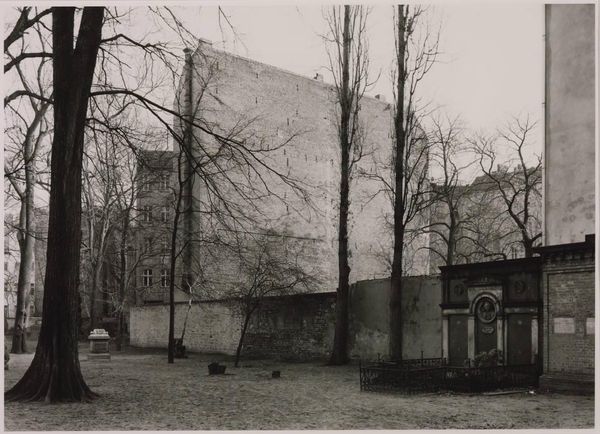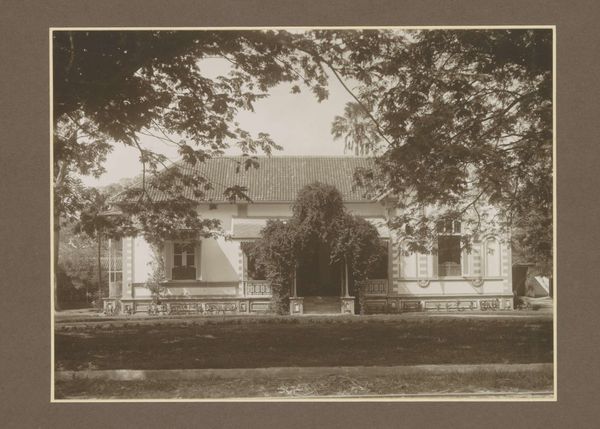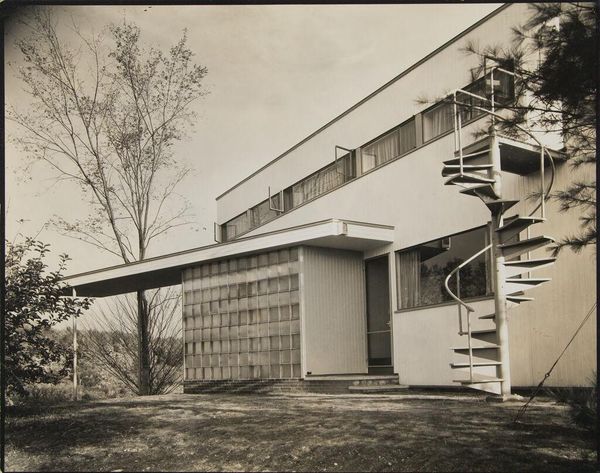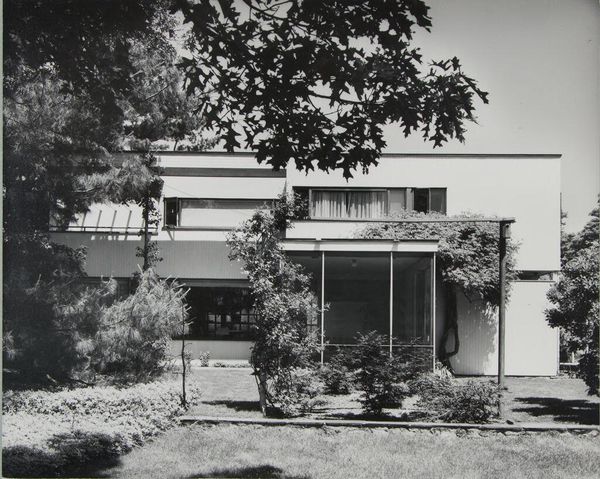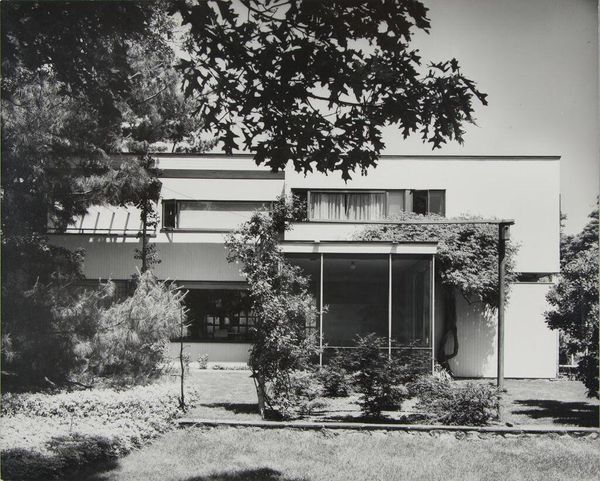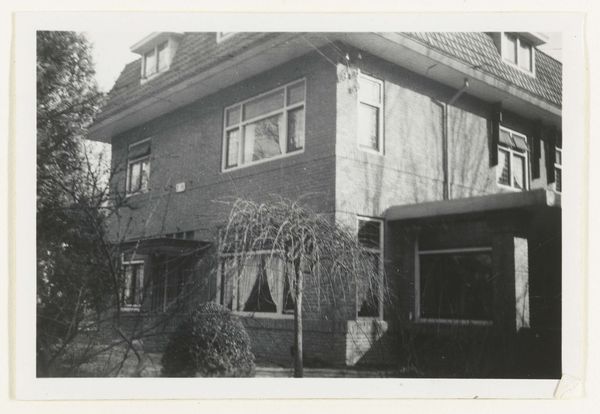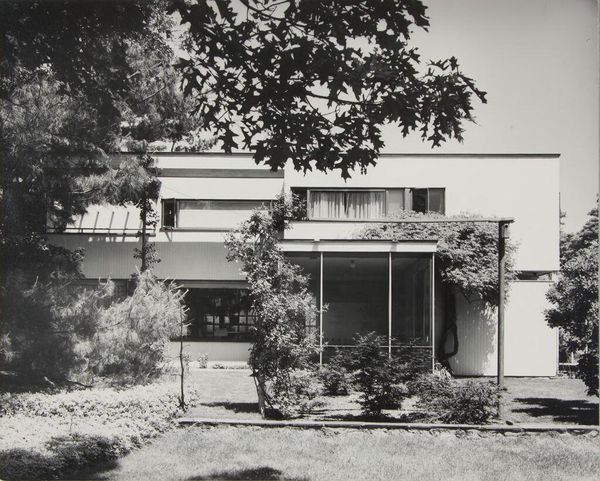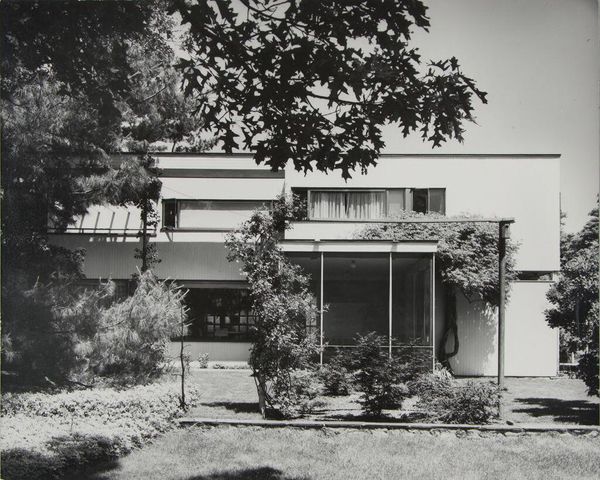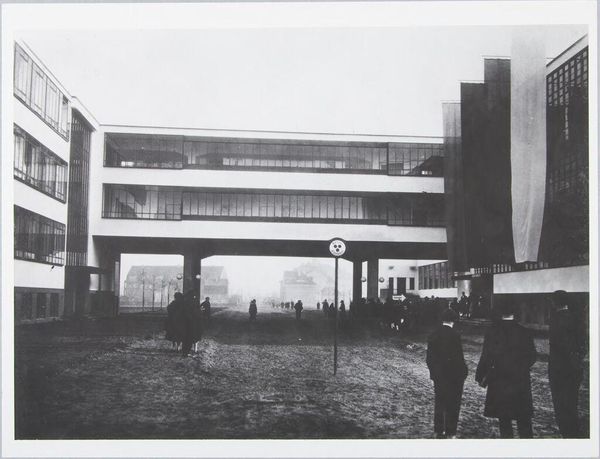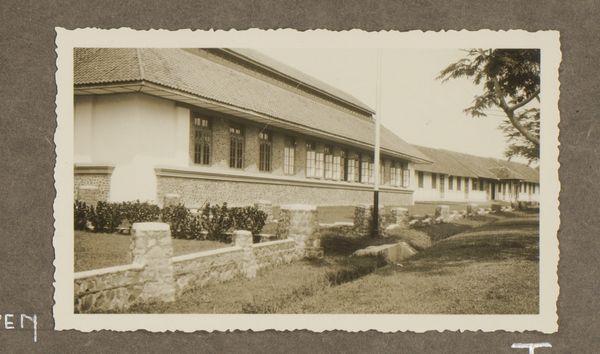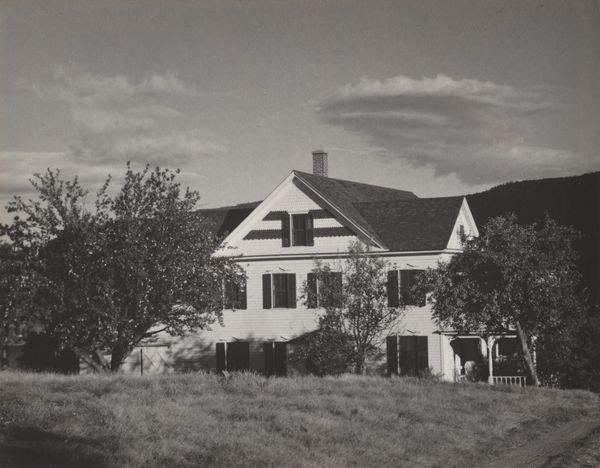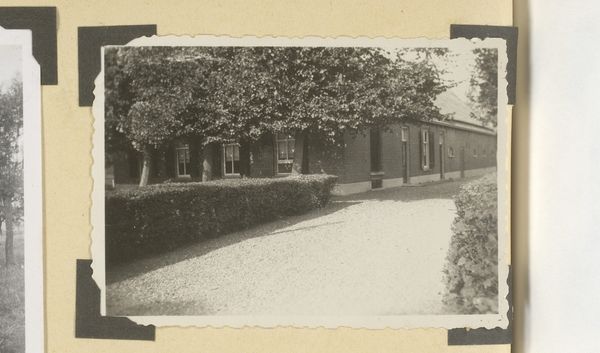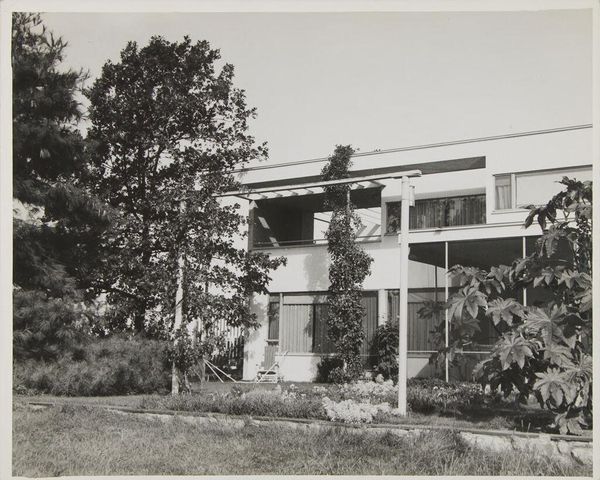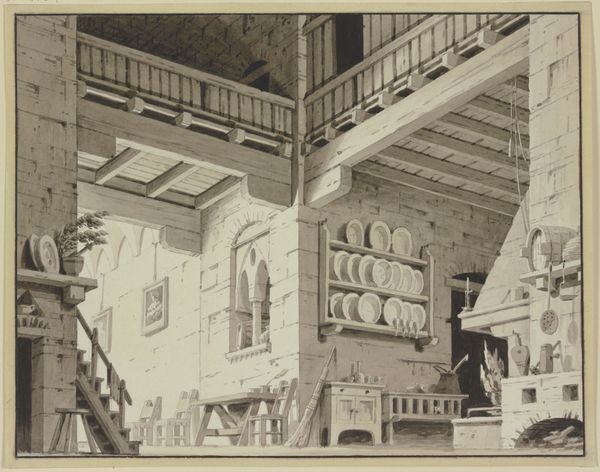
public-art, photography, site-specific, mural, architecture
#
socialist-realism
#
public-art
#
photography
#
building art
#
site-specific
#
public art photography
#
mural
#
architecture
Copyright: Valerii Lamakh,Fair Use
Curator: This is a photograph documenting Valerii Lamakh’s exterior design project for the Ternopil Cotton Plant, created in 1974. The images show the architecture featuring murals. Editor: My first thought is how this feels… both grand and a little melancholic. The scale of the mural is impressive, but the concrete facade gives it a somewhat somber tone, even despite the greenery in the foreground. Curator: Lamakh was a significant figure in Ukrainian monumental art, working within the Socialist Realism style. What we see here reflects the prevalent ideology, celebrating labor and industry but through a distinct cultural lens. It brings forward questions around cultural identity expressed through imposed styles. Editor: Exactly. Looking closely, I see figures involved in textile production: women spinning thread, others holding finished fabrics. It's idealized, of course, presenting labor as noble and dignified, but also highlighting women's contributions within this economic structure. The aesthetic reminds me of Byzantine iconography, transposed into a socialist context. How can we look at these pieces with contemporary feminist theory? Curator: That’s interesting because it raises the question of how public art served to shape social and gender roles in the Soviet era, especially considering its impact on female laborers who constituted the workforce, underscoring how such depictions functioned in normalizing those roles and identities within public imagination. It brings forward concerns with the politics of visibility. Editor: And the mosaics themselves – site-specific art intended to transform everyday architecture into ideological canvases. Consider how the institutional framework dictated what stories could be told, and whose stories were amplified in public spaces. This commission clearly served a purpose for the state, shaping its narrative through visual culture. Curator: I see how understanding its role within cultural policies offers profound insights. Analyzing it now offers insight to reimagine the legacies of such structures. Editor: Agreed. By critically examining these murals, we expose the complexities and lasting impact that these socialist representations had within gender, identity, and collective history. Curator: Ultimately, looking at the artist's vision, placed in its sociopolitical era, shows both aspiration and embedded complexities that are important to recognize today.
Comments
No comments
Be the first to comment and join the conversation on the ultimate creative platform.
